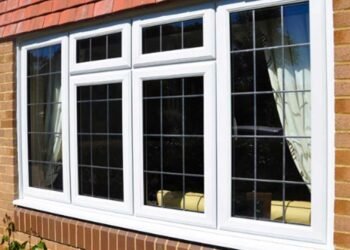When looking to lower utility costs, homeowners often focus on windows, HVAC systems, and insulation. However, the garage door is frequently overlooked. As an essential part of your home’s exterior, it affects more than just security and curb appeal—it can significantly impact your energy usage. Whether you’re building a new house or replacing an old door, choosing the right one can lead to long-term energy savings, improved comfort, and a more efficient home. Let’s explore how.
1. The Connection Between Garage Doors and Home Insulation
The garage, often connected to the house through a shared wall or direct access, plays a crucial role in home insulation. A poorly insulated garage door allows hot or cold air to flow in easily, putting extra strain on your heating and cooling systems. In winter, drafts from an uninsulated garage door can cool your home’s interior, while in summer, heat buildup in the garage can affect nearby or adjacent rooms. Installing a well-insulated garage door creates a thermal barrier, helping to maintain a stable indoor temperature and reducing energy usage.
2. Choosing the Right Garage Door Material
Garage doors come in various materials—each with different insulation properties. Homeowners should consider:
- Steel doors with insulation layers: These are energy-efficient and durable.
- Fiberglass doors: Often lightweight and resistant to extreme temperatures.
- Composite or multi-layer doors: These offer strong insulation when designed with energy savings in mind.
Your chosen material directly impacts your home’s energy performance. Where winters are cold and summers hot, a high thermal resistance door is a smart investment.
3. Understanding R-Value and What It Means
When comparing garage doors in Utah, look for the term R-value—a measurement of how well the door resists heat flow. The higher the R-value, the better the insulation.
- A low R-value (under 6) provides minimal thermal resistance and is best suited for detached garages.
- Mid-range R-values (7–12) offer moderate insulation, ideal for garages attached to your home.
- High R-values (13 and above) are optimal for maximizing energy savings and keeping the garage usable year-round.
Knowing what R-value is appropriate for your needs helps you avoid overspending on heating or cooling due to energy loss through the garage.
4. Sealing the Gaps: Weatherstripping and Bottom Seals
Even the best-insulated garage door needs proper sealing to perform efficiently. Gaps around the door, especially at the bottom, let in air, moisture, and pests. Given variable climates, effective sealing is crucial. Snow, wind, and dust can easily enter, disrupting your home’s comfort. Adding or replacing:
- Bottom door seals
- Side and top weatherstripping
- Threshold seals
These simple, cost-effective, and often overlooked upgrades significantly minimize energy loss.
5. Smart Use of Natural Light
Modern garage doors often include insulated windows or panels. These let in natural light, reducing the need for artificial lighting during the day. For homeowners using their garage as a gym, workshop, or laundry room, natural light is especially beneficial, particularly in winter. Selecting energy-efficient glass and strategic window placement provides both visibility and insulation.
6. Garage Door Maintenance Matters Too
Even the most energy-efficient garage door requires regular maintenance to stay effective. Over time, weatherstripping can wear out, insulation may degrade, and mechanical parts can shift, creating gaps that allow air to escape. Seasonal changes can also take a toll on exterior materials, making regular inspections essential. By keeping your garage door properly lubricated, balanced, and sealed, you can maintain its efficiency and extend its lifespan.
7. Long-Term Savings That Add Up
Energy-efficient garage doors require an initial investment, but the long-term savings are considerable. Expect lower energy bills, reduced strain on your HVAC system, and potential tax incentives for eco-friendly home upgrades. Furthermore, these features boost your home’s appeal to future buyers, enhancing comfort and cutting operational costs.
Conclusion
Homeowners often overlook their garage door’s impact on energy efficiency. In a state with weather extremes that drive up energy bills, installing and maintaining the right garage door can lead to a more efficient and comfortable home. As you plan your next home improvement project, don’t underestimate the value of a high-quality garage door. It’s a smart investment for long-term energy savings and improved year-round living conditions.












